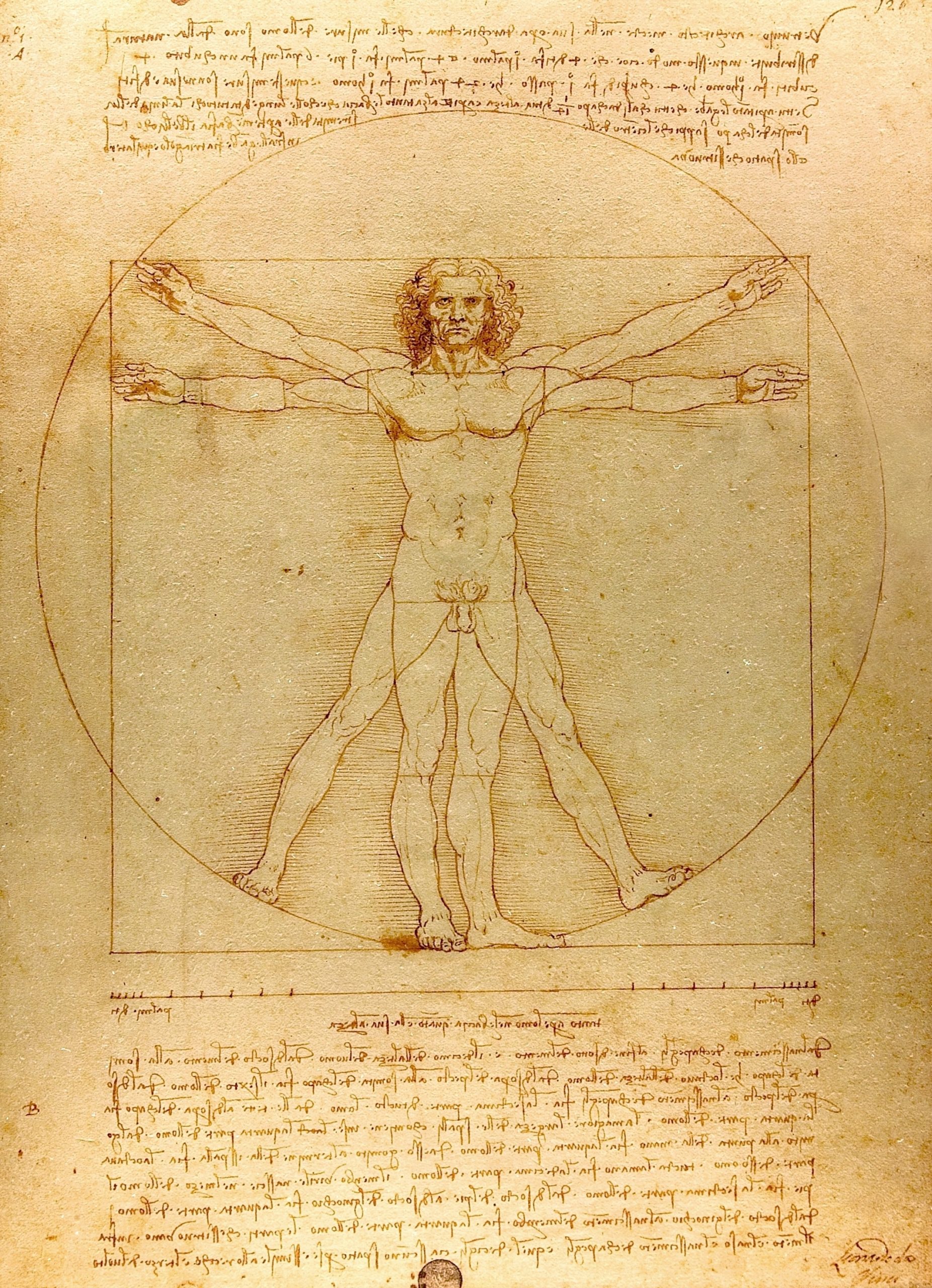
It may surprise us today but there was a moment in history when artists and thinkers earnestly searched for beauty and absolute truth. This search was not simply focused on the outward appearance or appeal of something but rather a deeply satisfying resolution thought to unlock the mysteries and meaning of our visual world.
This search was not simply for our amusement, entertainment or financial gain but to illuminate our minds, enrich our lives and advance civilization. This quest was once considered worthy of one’s dedication and life’s work. Imagine, composition being the focus of one’s life and work.
Leonardo da Vinci’s well-known sketch of the Vitruvian Man (1480-1490) was an exploration of proportion. His drawing shows a perfectly proportioned Christ-like figure inscribed in a circle and square, which was thought to reveal or illuminate the deep connection between the human form and the structure of the universe. It is important to note that the idea was not Leonardo’s but came from an ancient Roman architect named Vitruvius who lived 1,500 years earlier.
Vitruvius’ writings suggested that the human body fit perfectly within a circle (the symbol of the divine) and a square (the symbol of the earth).
If God, the ultimate original genius, created the wondrous universe, and humans were the pinnacle of his creation, and Christ was the incarnation of God himself in bodily form, then it followed that studying the human body could unlock the divine keys to beauty and truth. The proportions of the human body were discussed and implemented by makers to produce paintings, sculptures and buildings. In fact, a hotly debated subject in architecture for more than 300 years was determining if 1/5 was a better proportion than 1/7 — because the length of the nose was 1/5 of head and the length of your head was 1/7 of your body.
